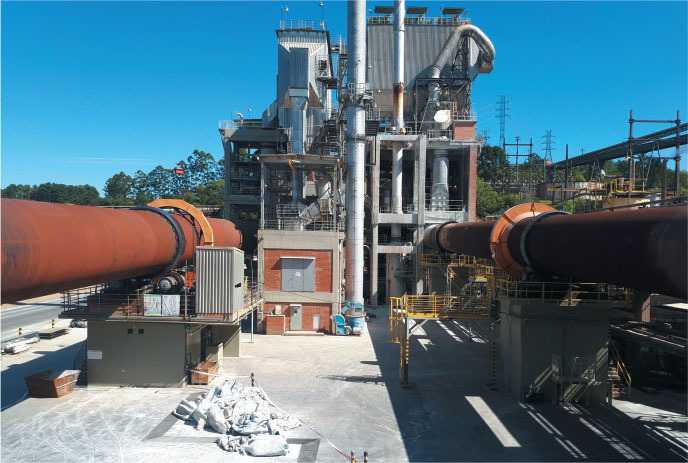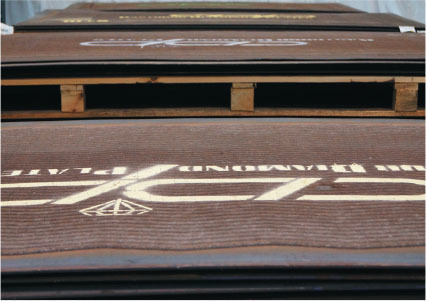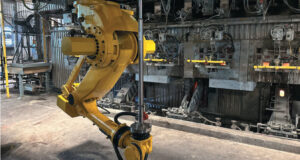
Reducing downtime in pulp and paper manufacturing through wear-resistant technologies is a significant challenge due to the wear of vital machine components. This results in added costs for repairs, replacement, and ongoing maintenance, as well as the cost of lost production.
Preventive maintenance and repairs based on advanced wearfacing technology can extend the life of critical machinery. Pulp and paper machinery is subject to various types of wear, including abrasion, impact, erosion, fatigue, corrosion, heat, and combinations of these. When critical equipment functions optimally, it consumes less energy. Therefore, wear protection can boost productivity, improve energy efficiency, and reduce CO2 emissions for pulp and paper operators.
A CLOSER LOOK AT WEAR-RESISTANT APPLICATIONS
Castolin Eutectic has been developing and applying wear solutions for the entire process, from the woodyard to mill services, since 1906. This approach is integral to the company philosophy of pioneering industrial sustainability. Mills have seen the benefits of wear protection in the pulp and paper production process, specifically in the key processes highlighted here.
The woodyard conveyor system is a crucial component of chip production, but it is susceptible to wear and tear from bark, dirt, and sand. To minimize downtime and extend the life of the chain, a dual-layer welding wire can be applied to the sprocket teeth. This wire features a base layer for impact resistance and a top layer for abrasion resistance, resulting in a 200 percent increase in durability without damaging the chain. Coating chain links with a tungsten carbide and nickel-alloy blend provides a durable, non-skid surface that is effective for over five years, preventing log slippage, especially in frosty conditions.
Debarking is essential for producing clean wood chips. Mechanical and hydraulic debarkers, such as ring and drum debarkers, are commonly used. Ring debarker arms, which are prone to abrasive wear, now have an improved service life of up to three months with a two-layer protective welding and hard coating.
Mulching involves using bark from debarked wood to fuel kilns and create horticultural products. Equipment such as hammermills and conveyors can experience wear from bark abrasion. Hog shredders can be enhanced with welding and powder coating to double their tip life. For bark crushing machines, a composite bi-metallic material called CDP® (CastoDur Diamond Plate) can extend the ejection strip’s life by 200 percent.

During chipping, debarked logs are processed into chips using various chipper designs, commonly flywheel-type discs. Chippers are subject to significant wear, particularly on the knives and surrounding areas, due to abrasive logs. This can lead to inefficiencies such as larger chip sizes. Common practices to mitigate this issue include regular maintenance and the use of rebuilt parts. At one site, a notable improvement was achieved by applying a preventive weld overlay to the chipper log-feeding spout, which extended its life to three years. A softer alloy was selected to avoid potential breakage.
In mills, chips are transported through pneumatic pipes, conveyor belts, and short-distance chain or screw conveyors. These methods face wear challenges that, at one mill, were resolved in a lifting tube that links a chipper to a cyclone. The use of CDP wearplates increased the tube’s lifespan by 400 percent. Fan rotors are subject to erosive wear from wood, sand, and dust. Custom CDP wear plate strips were used to extend the fan’s life significantly. Cyclones, which are prone to erosion from separating air, wood, and sawdust, saw a fivefold increase in service life after a complete rebuild using CDP wearplates, specialized welding, and protective coatings.
In pulp mills, screening segregates chips by size, with modern screens classifying by thickness to maintain accuracy while minimizing wear. The worn chip screen separator was repaired in place without disassembly or replacement by grinding and treating the points with a spray fusing process, resulting in significant cost savings.
Pulping transforms wood into a fibrous mass through mechanical, thermal, or chemical means. The discharge elbow of batch digesters, which is exposed to corrosion and wear, can have its lifespan tripled by using welding and overlay techniques to maintain it. Specialized welding and a protective coating can significantly extend the service life of the top screw, which transports chips and is prone to abrasion. It is recommended as the repair method.
WASHING, BLEACHING, AND PROCESSING
The cooked pulp must be washed to remove residual liquor and recover chemicals. To address corrosion and metal fatigue in washer screens, mills can use high-silver-content brazing rods for cost-effective repairs. Chemical corrosion is a significant challenge in the bleaching process. Refiner disks, which are prone to stress corrosion and wear, can benefit from nickel-chromium alloy 625 coatings applied through sandblasting and arc-spraying, which can extend their lifespan.
Screening operations are essential in processing to remove unwanted particles. Refiner shaft wear, which is often caused by corrosion and fretting, can be addressed by applying a torch-fused powder, increasing its lifespan by 300 percent. Similarly, for pump housings damaged by erosion and corrosion, a composite polymer repair offers a quick and effective solution, enhancing durability without altering the base metal.
Pulp mills use recycled paper and cardboard, processed in hydrapulpers where rotors shred the material into pulp. These rotors are subject to wear and can be repaired using specialized welding, which extends their life from two weeks to five months. In paper mills, the flowspreader and pressurized headbox distribute the stock flow. The paper is then pressed, dried, and calendered. The rewinder roll is a crucial component for paper quality. It is maintained using thermal powder spraying to restore its gripping surface, which enhances its wear life by over 200 percent.

Mill services support pulp and paper operations, focusing on chemical recovery, lime kiln, power generation, and water treatment. These areas require active maintenance, especially for high-maintenance components like boilers and kilns, to ensure continuous and reliable operation. This involves repairing process control valves, pumps, and various components using welding, coating, and thermal spraying to prevent wear and corrosion.
In pulp manufacturing, lime kilns are used in causticizing plants. These kilns are large steel tubes lined with fire-resistant brick and heated to 1450°C. They pose significant operational and maintenance challenges, such as cracking and misalignment of rollers, especially in longer kilns. The kilns rotate on rollers with cast-steel tires and convert lime mud to pellets. Repairing cracks in the kiln shell and tire splinters often requires low-heat welding using high nickel-based alloys to avoid expensive replacements and reduce downtime. Proper roller maintenance is critical due to the weight of the kiln. In-situ low-heat welding repairs can save significant downtime costs. These procedures improve kiln longevity and efficiency, which is crucial for continuous lime production
OPTIMIZING TCO THROUGH REPAIR AND REFURBISHMENT
Maintenance teams in the pulp and paper industry often have the first instinct to replace worn parts with brand new items. However, in this industry, continuity of operation is usually the primary concern. Therefore, repair and refurbishment can prove superior in many cases. It can also lead to a faster return to action. Using the latest wearfacing technology can improve operational life and result in greater reliability, improved sustainability, and lower total cost of ownership.
 Paper 360
Paper 360

